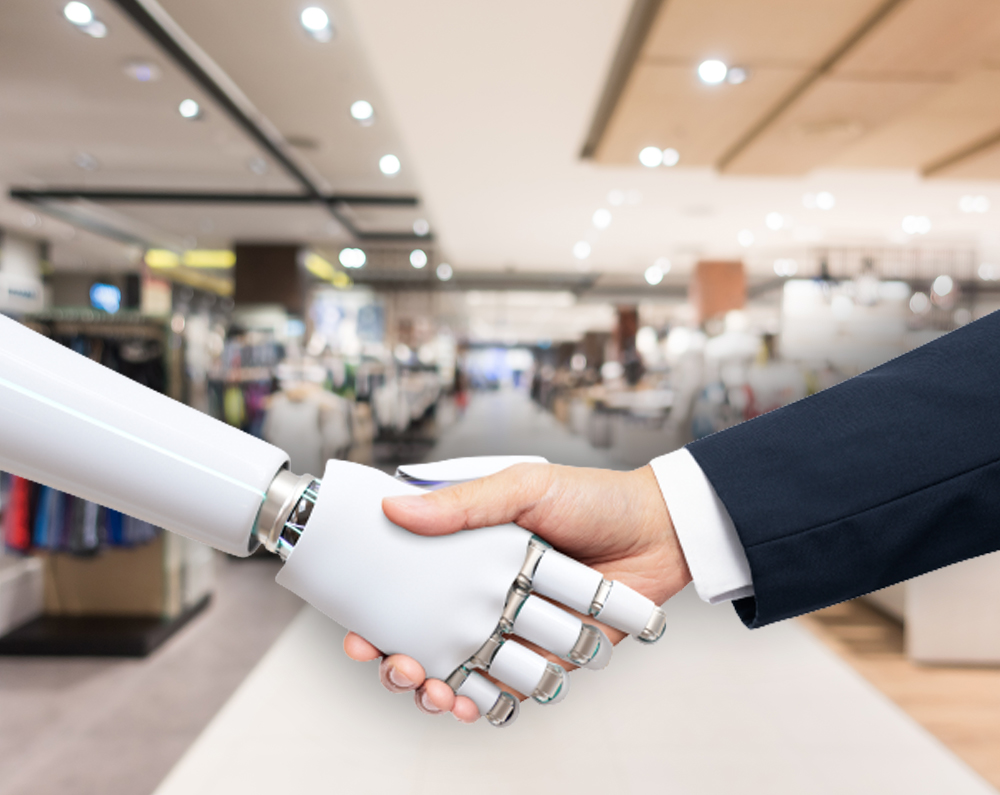
Digital Transformation Trends
Digital transformation means the integration of innovative technologies such as artificial intelligence (AI), cloud, machine learning, etc. into all areas of your business – small or big.

#FocusOnBestPractices
The international QSR market is projected to experience significant growth driven by factors like more demand for affordability and convenience, changing customer preferences, and the evolution of eCommerce as well as mobile technology in the coming years, with a predicted value of more than $160 billion by the year 2027.
Detect the major metrics: Identify the major KPIs that are related to your restaurant’s goals and operations such as average ticket size, sales, consumer satisfaction ratings, staff turnover, and cost of food.
Collate information: Once you identify the KPIs, collate data from multiple sources such as customer surveys and reviews, POS systems, and performance reports.
Cleanse and corroborate data: Before you analyze information, you need to ensure that the data is correct and dependable. For this, you need to perform data cleaning.
Evaluate data: Data analysis involves building visualizations, testing queries, and developing reports to recognize trends, order types, and perceptions. The technique involved is creating a training dataset that can vary depending on the problem, the nature of the data, and the machine learning algorithm you plan to use.
Explain the outcomes: Throw light on the results to gain useful insights and consider the informed decisions you can make to improve in areas such as minimizing wastage of food, optimizing employee efficiency, and improving menu offerings.
Take some action: Depending on your data analysis and interpretation, take action to implement improvements and changes such as menu enhancement, changing pricing strategies, improving employee training, and technology implementation.
Keep track of progress: Keep watch on your major KPIs to monitor progress and measure the impact of your data analysis and actions to make more adjustments.
You’ll find a powerful relationship between successful QSRs and intelligent customer data analysis. Here is how:
Tailored marketing: By assessing customer information, your restaurant can gain valuable insights into customers’ likes and behavior, allowing you to design targeted digital marketing campaigns and customized promotions.
Menu improvement: Use customer data to improve your menu by identifying popular foods, detecting menu gaps, and testing new items.
Order management: Use restaurant analytics on customer data to improve your order management by detecting peak times and customer order patterns.
Analytics is important for your QSR for multiple reasons:
Measure efficiency: Leverage data analytics for useful insights into your QSR and sales performance, as well as customer reviews and satisfaction ratings.
Minimize risk: Analytics will help your restaurant to recognize and alleviate risks, which could be food safety vulnerability, forecasting equipment breakdown, or lowering downtime.
Understanding customer better: Collate and assess information on customer actions, likes and preferences, and responses to boost customer experience and develop guest loyalty.
Better decision-making: Use data analytics to help your restaurant manager make informed, smart, and better decisions.
Improved profitability: Leverage data and analytics to detect improvement areas, boost operations, and target marketing campaigns and promotions. This helps to increase profits and earnings.
Let’s now discuss the many benefits of QSR intelligence and analytics:
Personalized dashboards: Get custom dashboards personalized to the precise requirements of your QSR.
Data in real-time: Get information in real time on major KPIs such as inventory, sales, and labor expenses.
Predictive analytics: Predictive analytics can indeed be valuable for forecasting restaurant sales and proactively planning for peak times while adapting staffing levels. It can also help to make accurate sales forecasts, anticipate demand fluctuations, and optimize staffing.
Cost reduction: Data analytics can be a valuable tool for restaurants to identify areas of inefficiency and waste, leading to cost reduction. Analyzing your inventory data can help QSRs improve their ordering practices and minimize waste due to overstocking.
The shift in customer preferences towards self-service ordering options, such as self-service kiosks, computer vision technology, and display systems, is a notable trend in the industry.
According to a leading self-ordering kiosk organization, 65 percent of customers stated that they would frequent a restaurant if the same has self-service kiosks. Also, an additional 30 percent of customers like to order food from a touchscreen kiosk compared to a cashier.
Touchscreen kiosks in restaurants push sales, boost efficiency, and enhance customer loyalty by providing a convenient, customizable, and interactive ordering experience. When integrated with kitchen technology and supported by data analytics, they can optimize operations, enhance the overall customer experience, and contribute to long-term success.
As per the National Restaurant Association, 79 percent of customers mention that self-serve kiosks made a significant difference when it comes to convenience. Self-service kiosks are popular because they:
Beat the line: More than 75 percent of diners would abandon the line if they’re made to wait too long.
Lower wait time: Food ordered via self-service kiosks takes approximately 40 percent less time to process
Improve check size: The kiosks have the potential to improve the average check size by 15 percent to 20 percent, making personalized suggestions based on a diner’s buying behavior.
Optimizes order precision: Customers hate to get wrong orders. 20 percent of those who hate wrong orders say that they wouldn’t try that restaurant ever.
Computer vision is revolutionizing QSRs, turning them into smart restaurants. The technology can record essential information like:
A leading multicuisine restaurant in Indiana experienced a staff crunch, being open round-the-clock leading to staffing issues and ability to answer phone calls. With voice AI in place, the QSR now answers 100 percent of the calls, also witnessing a 50 percent spike in calls answered. This led to increased revenue as the QSR projected a $55k growth in yearly sales last year.
The self-ordering kiosks in the QSR dining hall, together with modern kitchen technology in the kitchen such as Kitchen Display Systems (KDS), play a significant role in streamlining operations and optimizing order management. Orders can be efficiently routed to the appropriate areas in the kitchen, like the fry or the grill station. Chefs can prioritize dishes depending on how much time is needed to prepare them.
Integrating QSR intelligent analytics deep into your restaurant systems as well as processes is crucial for driving innovation and improving diners’ standard order value as well as lifetime value.

Digital transformation means the integration of innovative technologies such as artificial intelligence (AI), cloud, machine learning, etc. into all areas of your business – small or big.

The global fashion industry is considered one of the biggest in the world. From fast-fashion to high-end couture, the market is ever-expanding, with prominent labels continuing to create fashion trends both on the ramp and off.

In this era of rapid technological change, business leaders need to be aware of the latest software offerings to take advantage of important new functionality.
| Cookie | Duration | Description |
|---|---|---|
| cookielawinfo-checkbox-analytics | 11 months | This cookie is set by GDPR Cookie Consent plugin. The cookie is used to store the user consent for the cookies in the category "Analytics". |
| cookielawinfo-checkbox-functional | 11 months | The cookie is set by GDPR cookie consent to record the user consent for the cookies in the category "Functional". |
| cookielawinfo-checkbox-necessary | 11 months | This cookie is set by GDPR Cookie Consent plugin. The cookies is used to store the user consent for the cookies in the category "Necessary". |
| cookielawinfo-checkbox-others | 11 months | This cookie is set by GDPR Cookie Consent plugin. The cookie is used to store the user consent for the cookies in the category "Other. |
| cookielawinfo-checkbox-performance | 11 months | This cookie is set by GDPR Cookie Consent plugin. The cookie is used to store the user consent for the cookies in the category "Performance". |
| viewed_cookie_policy | 11 months | The cookie is set by the GDPR Cookie Consent plugin and is used to store whether or not user has consented to the use of cookies. It does not store any personal data. |